4000 years ago, a learned Egyptian scribe penned this advice: ‘Do not be proud because you are wise! Consult with the ignorant as with the learned! Perfect speech is more hidden than malachite, yet it is found with the maidservants at the millstones’. While wisdom may be found in unexpected places, unfortunately ignorance may be also. I was disappointed last week when the BBC and the Guardian published articles that inaccurately dismissed hieroglyphs as a more primitive form of writing than emojis.
Professor Vyv Evans, Professor of Linguistics at Bangor University, was quoted as saying: ‘As a visual language emoji has already far eclipsed hieroglyphics, its ancient Egyptian precursor which took centuries to develop’. While emojis are a fun and creative method of casual digital communication, they’re definitely not yet on the same level as ancient Egyptian, which was actually a structured, grammatical language capable of communicating complex, abstract ideas.
To compare the two, you can look at some fun emoji news headlines that the BBC put together. They manage to convey some very basic ideas, but only really work if you’re already familiar with the news stories to which they allude. For example, this one which is apparently ‘One in four people don’t know the dodo is extinct, a poll finds.
Compare an equivalent ancient Egyptian news-vehicle: the commemorative scarabs of King Amenhotep III. These were circulated with short inscriptions to celebrate the pharaoh’s successful hunts, marriage, and building projects. Much more can be conveyed since the script includes numerals, has phonetic symbols to spell out names, and has a grammatical structure through the use of word order, adverbs, adjectives, and pronouns. This scarab gives the names and titles of Amenhotep III and his wife Tiye and celebrates the fact that between years 1 and 10 of his reign the king shot a total of 102 lions!
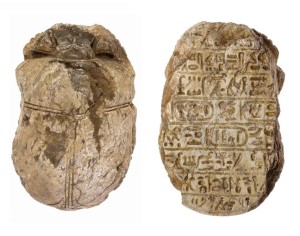
Following Evans’ BBC interview, Jonathan Jones wrote a rather scathing blog post in the Guardian, condemning emoji as a sign of modern cultural degeneracy and ancient Egypt as a form of dark ages: ‘After millennia of painful improvement, from illiteracy to Shakespeare and beyond, humanity is rushing to throw it all away. We’re heading back to ancient Egyptian times, next stop the stone age. Such ethnocentric attitudes exhibit a disappointing cultural chauvinism in judging the ‘evolution’ of other societies by Western values. But it’s not entirely surprising. Even the misinterpretation of hieroglyphs dates back to ancient times.
After Egypt had been absorbed into the Roman Empire, the last known hieroglyphic inscription was carved by a priest on August 24, 394 AD on the island of Philae, and the script was subsequently forgotten. The misconception of hieroglyphs as ‘picture writing’ began with the 4th century Greek grammarian Horapollo, who encouraged speculation about their mysterious symbolic significance. It was not until the rediscovery of the Rosetta Stone in 1799 and the decipherment of hieroglyphs in 1822 by Jean-François Champollion that script was finally understood again.
Hieroglyphic symbols don’t simply function as pictograms that stand for what they depict. Some do, but most symbols actually hold phonetic values and represent sounds. Often symbols have multiple functions depending on their context. For example, the ‘house’ hieroglyph can be used as a pictogram to write the word pr, meaning ‘house’ (left below), but it also holds the phonetic value pr, which can be used to write other words, such as pri, meaning ‘to go forth’ (right below).
Modern Chinese writing is presumably not dissimilar–the characters are more stylised of course, but most people probably don’t realize that hieroglyphs were actually only used for monumental inscriptions and religious texts. In ancient Egypt, everyday documents, such as accounts, letters, and even literary texts were written using pen and ink in a cursive form of the language known as hieratic.
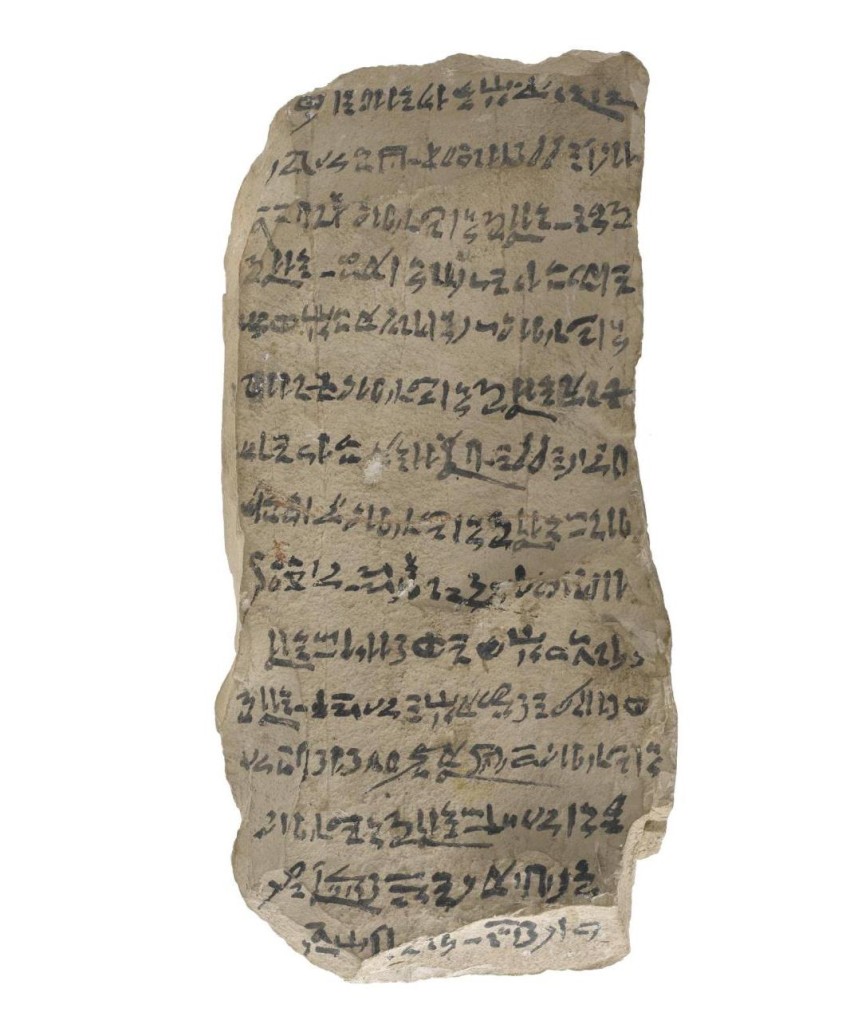
The article goes on to state:
The Egyptians created a magnificent but static culture. They invented a superb artistic style and powerful mythology – then stuck with these for millennia. Hieroglyphs enabled them to write spells but not to develop a more flexible, questioning literary culture: they left that to the Greeks.
These jumped-up Aegean loudmouths, using an abstract non-pictorial alphabet they got from the Phoenicians, obviously and spectacularly outdid the Egyptians in their range of expression. The Greek alphabet was much more productive than all those lovely Egyptian pictures. That is why there is no ancient Egyptian Iliad or Odyssey.
There are quite a few incorrect statements to deconstruct here. While the ancient Egyptians deeply valued tradition, their culture, language and writing systems were certainly not static. It might seem that way to the uninformed casual observer, especially since the media and schools often present a monolithic picture of Egypt, but I won’t go into an extensive discussion of the history Egyptian art and architecture here. Suffice to say, that such generalisation could just as easily characterise much of Western architecture as static for its obsession with the Classical traditions of Greece and Rome.
Furthermore, those Greek and Phoenician alphabets that are so superior to ‘Egyptian pictures’? They may have actually evolved out of hieroglyphs via proto-Sinatic, as did many modern alphabets.
Jones argues that Egypt did not have a ‘flexible, questioning literary culture’ and ‘there is no ancient Egyptian Iliad or Odyssey’, however numerous literary texts survive from ancient Egypt. While one could argue about literary merit and aesthetics, the fact remains that poetic compositions were created and written down in Egypt at least 1000 years before Homer lived, and almost 2000 years before the earliest surviving manuscript fragments of the Iliad and Odyssey. Ancient Egyptian literary compositions such as the celebrated ‘Tale of Sinuhe’ (c. 1900 BC) are epic in scope, if not length. They employ evocative imagery and metaphors, and present ambiguous explorations of themes such as Egyptian identity, justice, and kingship.
For example, in the ‘Tale of Sinuhe’ (the subject of an excellent episode of the BBC Radio 4 programme ‘In Our Time’), the official Sinuhe flees Egypt when he hears of the king’s assassination and spends years in exile. The poem hauntingly describes his escape, when he gets lost in the desert, before his dramatic rescue: ‘Thirst’s attack overtook me, and I was scorched, my throat parched. I said: ‘This is the taste of death’.

After many adventures abroad, living amongst foreigners as a champion and leader of his own tribe, Sinuhe grows old and begins to wish to return home. In his emotional appeal for divine aid, he says: ‘Whatever god fated this flight – be gracious and bring me home! Surely You will let me see the place where my heart still stays! What matters more than my being buried in the land where I was born?!’. The new king of Egypt finally writes to Sinuhe, pardoning him and urging him to return, where he is welcomed home and finally dies in the favour of the king.
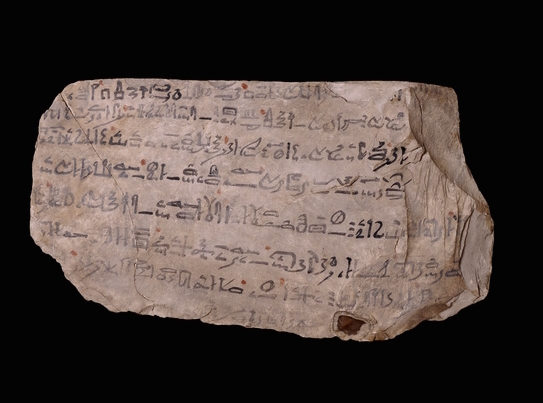
Another poem known as the ‘Dialogue of a Man and his Soul’ presents a man who despairs of his life and wishes to commit suicide. He debates the merits of life and death with his ba (soul/personality), who tries to convince him to live. Imbued with existential anguish, dramatic tension, and vivid imagery, the poem is remarkably moving, even thousands of years after its composition. For example, the man exclaims: ‘Who can I talk to today? For brothers are bad, and the friends of today do not love’. He describes the seductive appeal of death’s oblivion: ‘Death is to me today like a sick man’s recovery, like going out after confinement. Death is to me today like the smell of myrrh, like sitting under a sail on a windy day’. In the end, the man’s soul manages to reconcile him to life, promising ‘I shall alight when you are weary; so shall we make harbour together!’.
To sample more ancient Egyptian poetry in translation, I recommend Professor Richard Parkinson’s book ‘The Tale of Sinuhe and Other Ancient Egyptian Poems’.
In the 21st century, I’d hope we can begin to move beyond the colonialist attitudes and Orientalism that have often dismissed ancient Egypt and other cultures as primitive and inferior to Classical civilisations. However, even when Egypt’s achievements have been admired, some scholars have tried to whitewash its people and culture, for example arguing that Egyptian civilisation could only have been founded by invaders from Mesopotamia (read Europeans). It’s about time that we gave the ancient Egyptians credit for their achievements and learned a bit more about them–in their own words. An ancient Egyptian eulogy to writers says: ‘They did not make for themselves pyramids of bronze … they made heirs for themselves as the writings and teachings they begat … Departing life has made their names forgotten; writings alone make them remembered’. Over 200 years after the decipherment of hieroglyphs, their words are able to speak once again – louder than any emoji.
Update: Professor Vyv Evans contacted me on Twitter to state: ‘I have never dismissed hieroglyphs as primitive’. He justified his statement to the BBC saying: ‘Emoji has stormed the world: 2 billion users in under 3 years. That is the claim, based on findings of fact’, and argued that the comparison between emoji and hieroglyphs was appropriate ‘due to the visual representational channel of over 6 million years’.
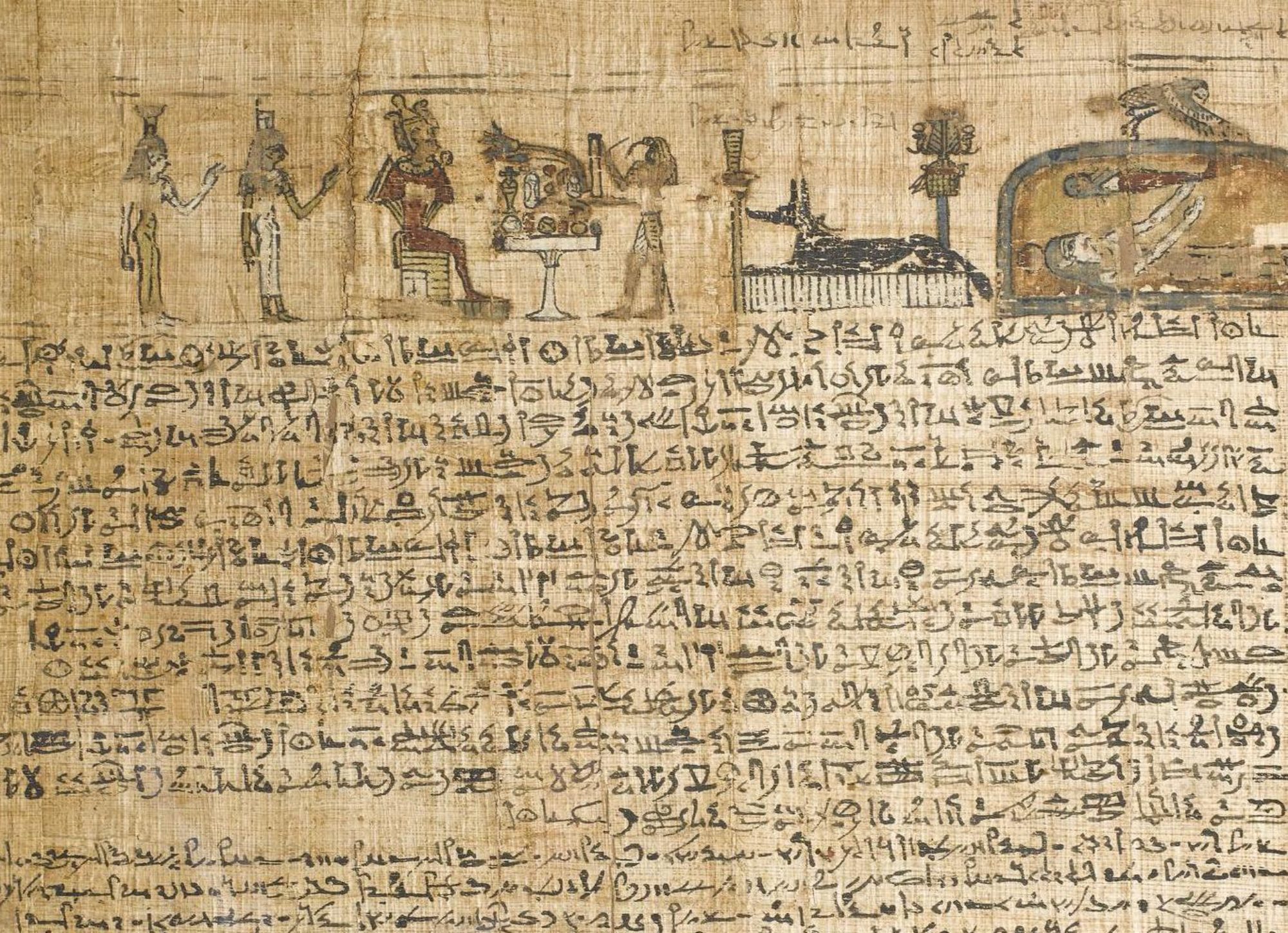
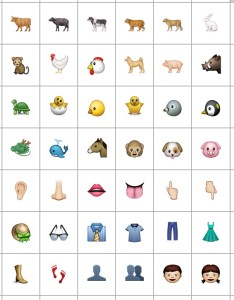
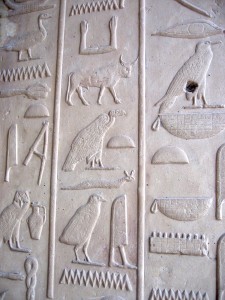



After teaching the different stages of Ancient Egyptian Hieroglyphs to literally hundreds of students over more than 25 years, I am shocked that some people still think it is a primitive language.
It seems that even in the 21st century, with access to the internet (including scholarly resources of all kinds), there are those whose ignorance is still allowed to be paraded because they have a privileged position.
How is it possible that someone could be a professor of Cognitive Linguistics, be interviewed and quoted by the BBC, and yet be so factually inaccurate? I hope this apology is forthcoming.
An additional concern: is the lack of knowledge and denigration of non-European cultures reflected in the Guardian blog and even some of its well-intentioned comments mere ignorance, or something darker? Are these the remnants of colonialism and racism?
Thank you for taking on these inaccuracies so ably.
Allow me to congratulate you on this important response.
The alphabet table comes from my article “How the Alphabet Was Born from Egyptian Hieroglyphs” published in BAR (Biblical Archaeology Review) Vol.36 no.2, April 2010
Thank you very much for your kind words Professor Goldwasser! I hope you don’t mind my using your excellent alphabet table- I had wondered if it might be yours, but the BAR page I found it on didn’t say and I was in a bit of a hurry to post it. I’ve amended the caption and added a link to your article, but just let me know if you’d prefer me to remove it. Thanks!
Hi Margaret
I’m surprised at how many professorly people like Jonathan Jones, who should know better than to pronounce confidently about fields outside their expertise, continue to reproduce the myth that Hieroglyphs are ideograms. It was precisely this myth that prevented them from being deciphered for hundreds of years. It’s interesting that in the Renaissance ideographic writing was taken to indicate the depths of Egyptian wisdom not cultural degeneracy! hieroglyphs were regarded as representing ideas directly, without the mediation of language and it required a major paradigm shift to see them as phonographic. Hieroglyphs are also functionally very different from emoji even when they aren’t phonographic: emoji usually have a pragmatic function, whereas most non-phonographic hieroglyphs are semantic determinatives, like the radicals of Chinese logograms.
dear Margaret,
Thank you very much.
All best
Orly Goldwasser
I read your post with much pleasure this morning and reposted it on Em Hotep BBS (Facebook). Just one comment, if I may: the hieroglyphic origin of the proto-Sinatic alphabet, as argued by Prof. Goldwasser, is not without its critics. See Brian Colless’ paper in Antiguo Oriente 12 (2014): https://www.academia.edu/12894458/The_origin_of_the_alphabet
I am in no position to judge the arguments — which are way beyond my expertise — but one should be aware that there is an ongoing debate.
Warm good wishes, Judith
Much of this debate seems to rest upon personal interpretations of the word “primitive”. For some people it apparently implies semi-intelligent, atavistic and barely functional, while, for others, something more like prototypical and exploratory, i.e., the application of intelligence to a perceived need, and so to be commended.
There also seems to be some confusion between the external appearance of a script and its internal rules for functioning as a map of true language. With an undeciphered script there is initially only the visual impression, and the (often fanciful) names given to this then tend to stick long after progress has been made with decipherment.
Personally, any script that depicts (or whose ancestor depicted) recognisable objects I call “pictographic” in nature, regardless of whether the symbols have acquired phonetic and/or idiographic values. This term is limited to the script’s external aspect. I avoid the term “hieroglyphic”, which really refers instead to the assumed internal usage of the script within its cultural setting.
We are used to the ultimately pictographic origin of cuneiform, alphabetic, Aegean, Anatolian, Chinese and probably others, and, where understood, to the diversity in their evolution of phonetic and idiographic functions. The instinctive subunit in spoken language is the syllable, however, not a lexical element, and the example that comes to mind is the hunter (and genius) Sikwayi’s single-handed invention of the Cherokee syllabary, which epitomises the arbitrary linkage of a symbol to a sound value without reference to the origins or existing functions of the selected symbols. Of course, he had already seen the idea of writing and of the social power that it gives, and, in this, his experience differs from that of the developers of those ancient scripts, but his triumph is well worth bearing in mind.
Agreed and thankyou. (Anyone using the term ‘hieroglyphics’ obviously isn’t too well informed.) However, at the other end of the scale, those more expert in ancient Egyptian need to be mindful of projecting Western culture into English translations and keep these as close to the original ‘voice’ as possible, in case we make it into something that it isn’t.